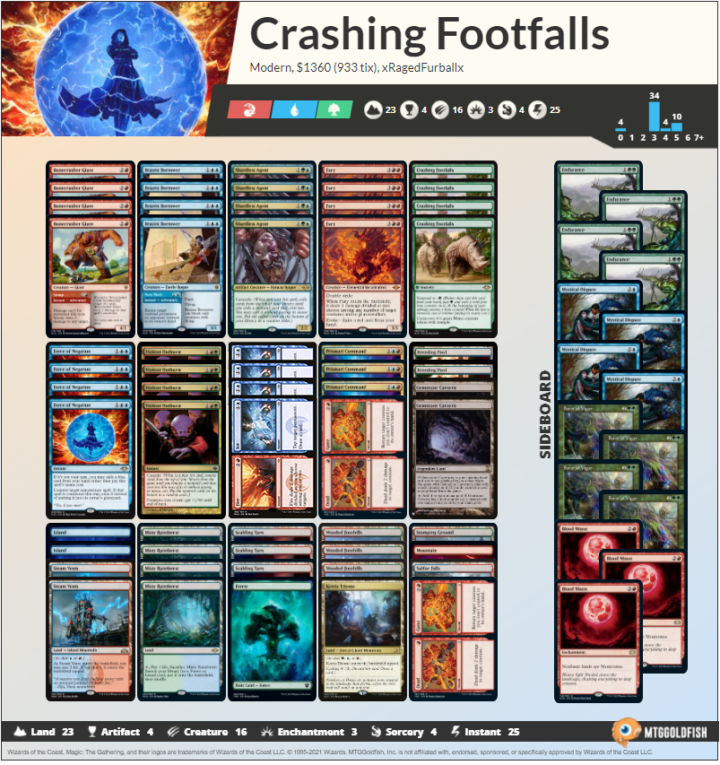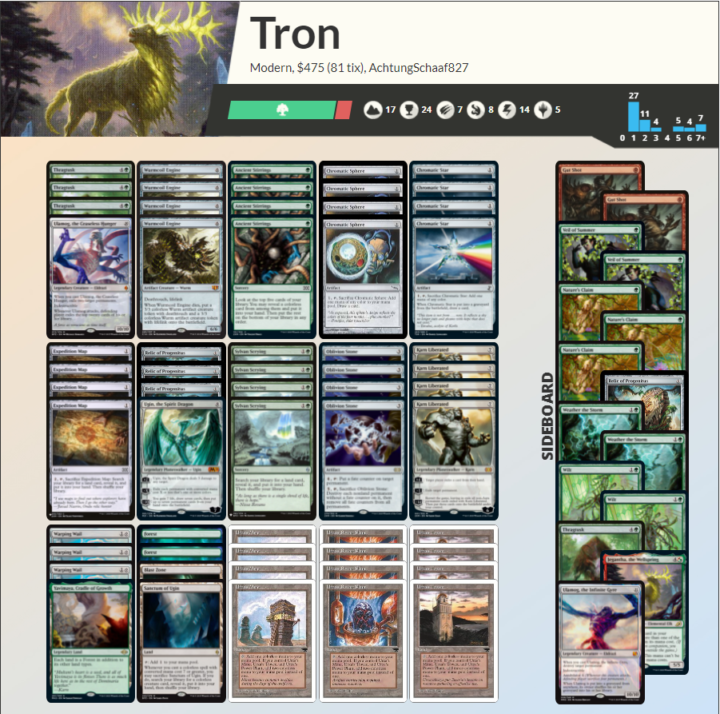Michael Rapp takes us through his top five Modern decks for beginners, taking into account budget, ease of learning, and overall strength in the Modern metagame.
Before we get into my selection, I’d like to clarify one thing. I’ve seen a number of articles of this style that just default to “here are the five cheapest decks in Modern”, and I don’t think that’s the correct way to approach the situation. Another common problem I notice when discussing this topic is that someone will just recommend a bunch of easy decks to pilot, despite power level, or overall position in the metagame. The way that I’ve chosen the decks to share with you today is through considering a combination of cost, complexity, and power level. They’re also presented without order; you should pick a deck that speaks to you.
Crashing Footfalls
Crashing Footfalls is one of the premier tempo decks in Modern right now, and a great place to start, especially for folks who have experience playing Standard. In fact, if you’ve played Standard recently, you are likely familiar with Brazen Borrower and Bonecrusher Giant, which are both key elements of the removal package in Crashing Footfalls.
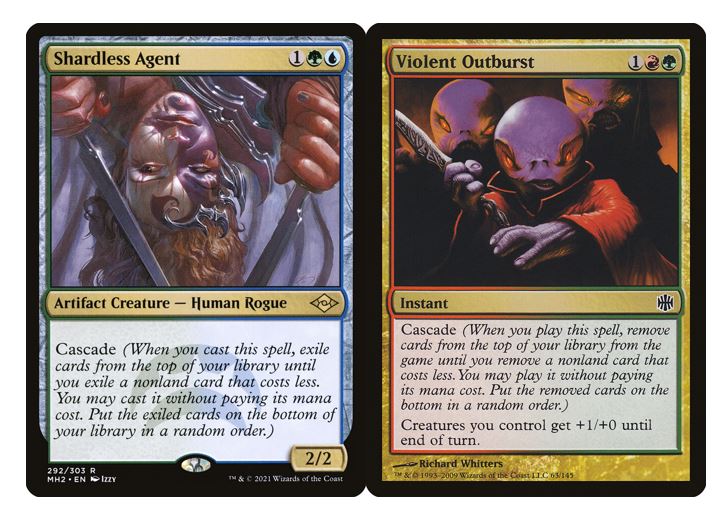
The game plan for Crashing Footfalls is to cast either Shardless Agent or Violent Outburst and cascade into Crashing Footfalls. You don’t need to worry about cascading into something that isn’t rhino tokens, because the deck is designed for Crashing Footfalls to be the only spell with mana value two or less. Once you have your rhino army, you can start using your removal to get aggressive. Fire//Ice, Dead//Gone, Bonecrusher Giant, Brazen Borrower, and Fury are important because they act as cheap removal that doesn’t disrupt the cascade plan.
Free spells aren’t the most beginner friendly as they create a lot of decision points. At this point they’re common enough in Modern that you’ll need to understand how they work in order to succeed. Just be sure to think about all of the angles that you can with Fury and Force of Negation, and you’ll get the play patterns in time.
Tron
Tron is a Modern classic, and a great entry point to the format. Tron is about getting a large amount of mana from the combination of Urza’s Mine, Urza’s Power Plant, and Urza’s Tower. The central plan for Tron is to assemble these lands as soon as turn three by using Sylvan Scrying, Ancient Stirrings, and Expedition Map. Once Tron has been completed, a common follow up is Wurmcoil Engine or Karn Liberated, both of which most decks aren’t equipped to deal with on turn three. Ugin, the Spirit Dragon and Ulamog, the Ceaseless Hunger are here to slam the door shut on your opponent.
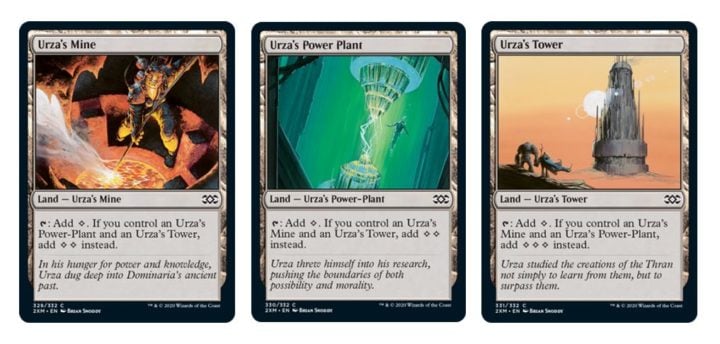
The biggest skill to develop with Tron is knowing when to mulligan. As a Tron pilot you’ll need to be okay with going down to three or four cards more often than any other deck. The biggest sign of a keepable hand is that you can assemble all three Tron lands on turn three. Some hands are good enough—or the matchup may be slow enough—that you can keep a turn four Tron hand. The moral here is that when you get to play your spells, they are so powerful that it’s worth mulliganing aggressively to make sure you can play them on time.
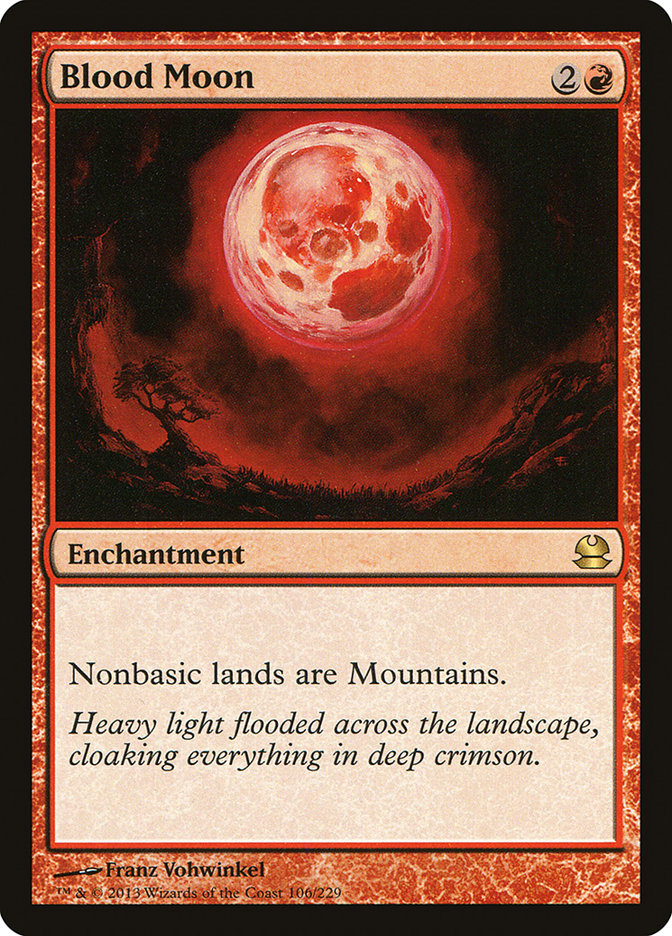
I like Tron as a choice because it’s powerful, cheap, doesn’t require a ton of format knowledge, and is relatively well positioned. Tron doesn’t have much in the way of interaction, so you don’t need to know exactly what your opponent is up to; not like you would if piloting a deck with counterspells, for example. Format knowledge that you need for Tron is how your opponent plans to slow you down in sideboard games. Common options are Alpine Moon, Blood Moon, and Spreading Seas. Against red or blue decks it is wise to board in some of the Wilt or Nature’s Claim. Thankfully both Wilt and Nature’s Claim will also take care of Void Mirror and Damping Sphere, which aren’t in sideboards specifically for Tron, but have some potential to come in.
Burn
Burn, much like Tron, is a long-standing Modern classic. Proactive and aggressive strategies are powerful, and usually well positioned throughout the history of the format. Players looking for those strategies have often chosen Burn. In addition, Burn is relatively forgiving, and inexpensive—an attractive combo.

The game plan here is simple: use cheap but powerful burn spells and efficient creatures to kill the opponent before they ever really get a chance to get going. Goblin Guide or Monastery Swiftspear on turn one are going to be among the best starts for Burn, especially when they’re backed up with whichever flavor of Lava Spike you happen to have in hand.
As linear as Burn looks, there are multiple ways in which a game can play out. Against combo decks you want to go as fast as possible to kill your opponent before they can put together all of the pieces. When playing against Death’s Shadow or control decks it’s often best to wait and pick your spot carefully; the best way to pick your spot is to just hold cards in your hand until you have enough damage to overwhelm the opposing counter-magic at the end of their turn. Then, untap and finish the job.
Against a lot of the fair decks Burn has a sort-of inevitability. Because you are better at dictating the pace of the game than most midrange decks, they often need to win the game before you can stack up too many spells. Currently, Modern is relatively dense with midrange decks, so shifting the onus onto them puts Burn in a great place.
Mill
Mill comes in two flavors: the classic Dimir, and the new hotness, Azorius. Currently, I think Azorius is the better version. The key difference is that while Dimir Mill plays like Burn—trying to go as fast as possible—Azorius plays closer to a control deck. Staying alive for the first few turns is the name of the game with Mill, because once you are able to start casting Fractured Sanity and Tasha’s Hideous Laughter, you won’t have to take many chunks out of the opponent’s library to end the game.

I love Mill right now for new players to Modern because while it is fairly linear, it does have some decisions about how and when to use your interaction. Cycling Fractured Sanity isn’t something that comes up frequently, but sometimes it’s the right play if you’re short on lands, or if you just need an uncounterable mill four to end the game.
The popularity of Hammer Time is a boon for Mill, as the total mana value of that deck is incredibly low, which lets Tasha’s Hideous Laughter win the game with only a little help from the rest of the deck. Field of Ruin can either disrupt the opponent’s mana, or force a search to let you cast Archive Trap for free, which is another fun little interaction that adds a bit more play to the deck. A powerful, inexpensive, well positioned deck is going to take you a long way into learning Modern.
Mono Red Eldrazi
Last up I have Mono Red Eldrazi, which I think is one of the most underrated decks in Modern. From what I can tell, Mono Red Eldrazi has been around for about a month, has won a MTGO challenge, and finished second in another. From a power level or meta positioning perspective it’s hard to do much better than that. Mono Red Eldrazi is on the more expensive side of decks, but nearly all of that price tag is tied up in Ragavan, Fury, and Chalice of the Void, all of which are widely played Modern staples—the ideal type of cards to invest in.
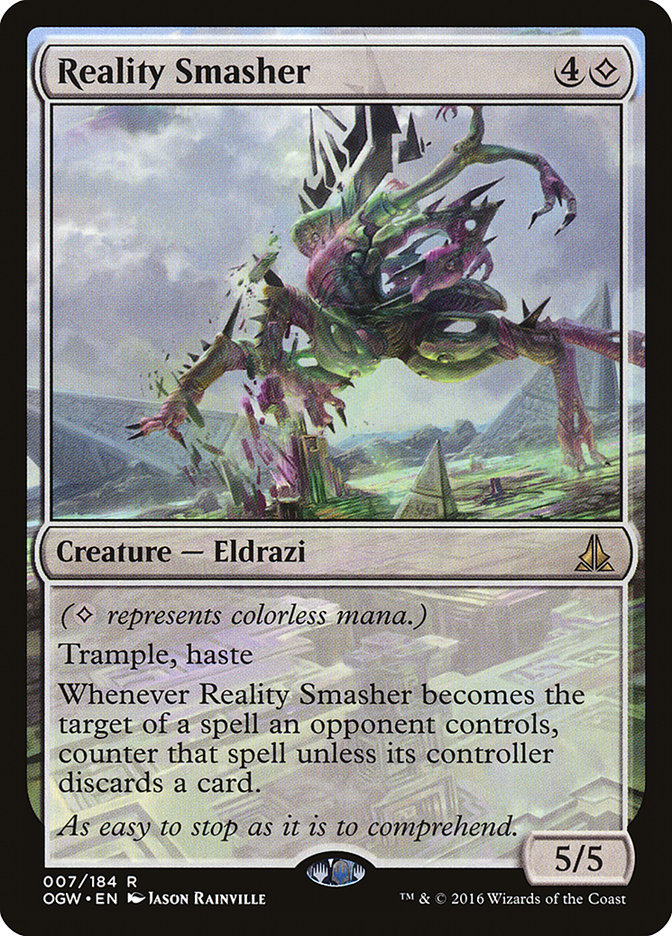
The play patterns in Mono Red Eldrazi are going to feel remarkably similar to a Standard deck. A curve of creatures, most of which with different modes or abilities, backed up by some flexible removal. Ragavan is simply one of the best cards in Modern at the moment, and has plenty of decisions just because of the dash ability, nevermind whether or not you want to cast a spell from your hand or one from the top of your opponent’s library. Bonecrusher Giant and Fury are again both modal; one of the reasons the Crashing Footfalls deck loves them so much.
Eldrazi Obligator can fill your curve in the two drop slot, or you can hold it to surprise your opponent by stealing a blocker and attacking for a bunch of unexpected damage. Shatterskull Smashing is a land when you need it, and a removal spell when you don’t, which works wonderfully with the game plan of bigger creatures and removal. I think players who liked Throne of Eldraine Standard—or Limited—will feel right at home learning Mono Red Eldrazi.
Modern can be daunting for a variety of reasons, not least the complexity and price of the format. My best advice for players new to Modern would be to identify the kind of decks you like in other formats and see which decks in Modern look like those, and whether they look interesting here. Due to the cost of some Modern cards I would recommend that you try out some decks online or with friends before diving into a big purchase. Hopefully I have given you some insight on what I believe are good entry points to Modern, so that you too can also enjoy my favorite format! If you think that there are more great starting places that I didn’t mention here, be sure to let me know on Twitter @RappaciousOne. I can’t wait to see you all at the tables soon.

Michael Rapp is a Modern specialist who favors Thoughtseize decks. Magic sates his desire for competition and constant improvement.


